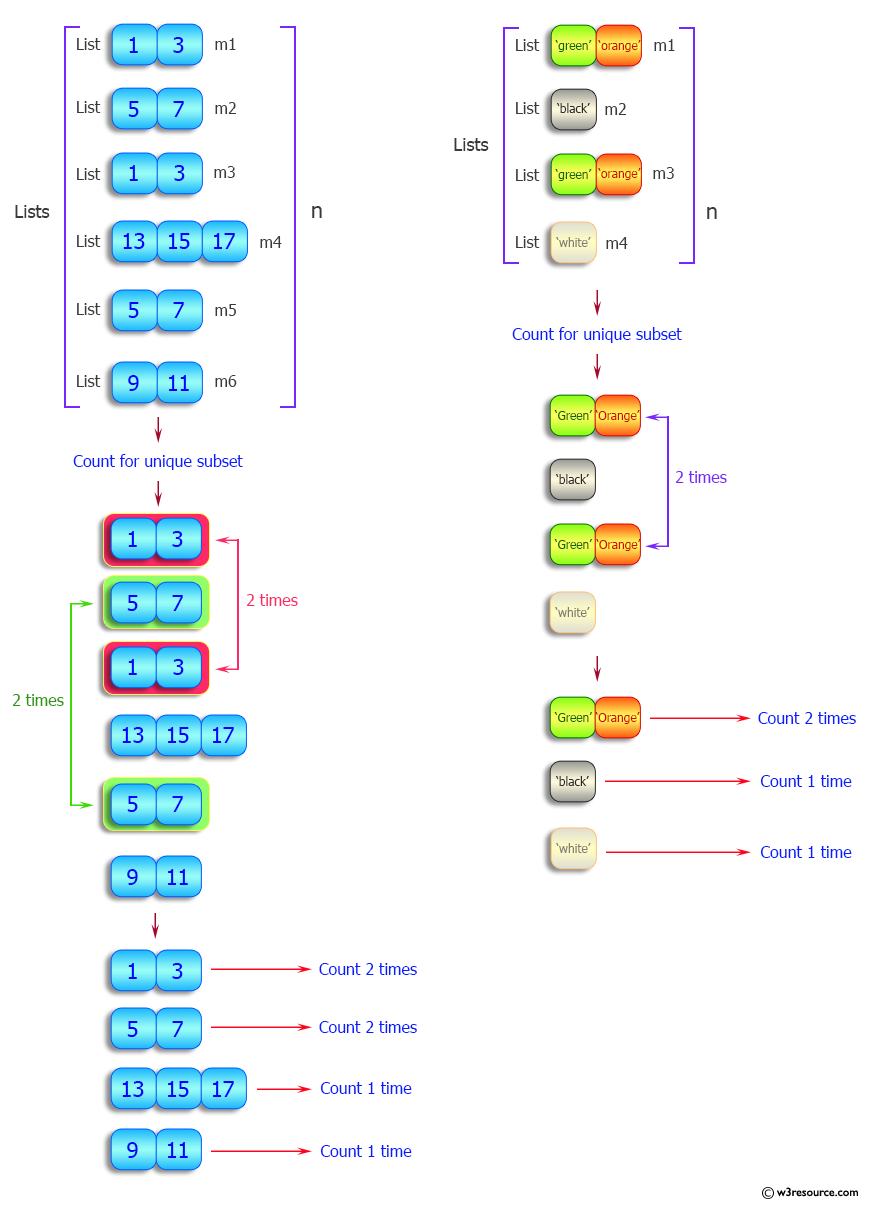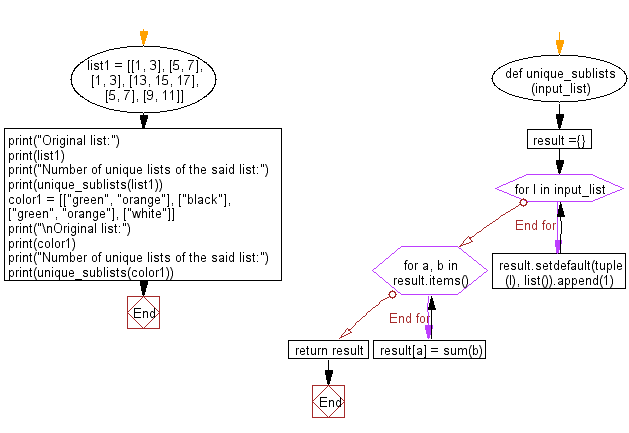Python: Count number of unique lists within list
Count Unique Sublists in List
Write a Python program to count the number of unique sublists within a given list.
Visual Presentation:

Sample Solution:
Python Code:
# Define a function 'unique_sublists' that counts the number of unique sublists in 'input_list'
def unique_sublists(input_list):
# Create an empty dictionary 'result' to store the sublists and their counts
result = {}
# Iterate through the sublists in 'input_list'
for l in input_list:
# Use a tuple representation of the sublist as a key to the 'result' dictionary
# and append 1 to the list associated with that key
result.setdefault(tuple(l), list()).append(1)
# Iterate through the items in 'result' and replace the list of counts with their sum
for a, b in result.items():
result[a] = sum(b)
return result
# Create a list 'list1' containing sublists of numbers
list1 = [[1, 3], [5, 7], [1, 3], [13, 15, 17], [5, 7], [9, 11]]
# Print a message indicating the original list
print("Original list:")
# Print the contents of 'list1'
print(list1)
# Print a message indicating the number of unique sublists in the list
print("Number of unique lists of the said list:")
# Call the 'unique_sublists' function with 'list1' and print the result
print(unique_sublists(list1))
# Create a list 'color1' containing sublists of colors
color1 = [["green", "orange"], ["black"], ["green", "orange"], ["white"]]
# Print a message indicating the original list
print("\nOriginal list:")
# Print the contents of 'color1'
print(color1)
# Print a message indicating the number of unique sublists in the list
print("Number of unique lists of the said list:")
# Call the 'unique_sublists' function with 'color1' and print the result
print(unique_sublists(color1))
Sample Output:
Original list:
[[1, 3], [5, 7], [1, 3], [13, 15, 17], [5, 7], [9, 11]]
Number of unique lists of the said list:
{(1, 3): 2, (5, 7): 2, (13, 15, 17): 1, (9, 11): 1}
Original list:
[['green', 'orange'], ['black'], ['green', 'orange'], ['white']]
Number of unique lists of the said list:
{('green', 'orange'): 2, ('black',): 1, ('white',): 1}
Flowchart:

For more Practice: Solve these Related Problems:
- Write a Python program to identify duplicate sublists within a list.
- Write a Python program to remove duplicate sublists from a nested list.
- Write a Python program to count occurrences of each unique sublist.
- Write a Python program to merge duplicate sublists by summing their elements.
Go to:
Previous: Write a Python program to count the number of sublists contain a particular element.
Next: Write a Python program to sort each sublist of strings in a given list of lists.
Python Code Editor:
What is the difficulty level of this exercise?
Test your Programming skills with w3resource's quiz.
